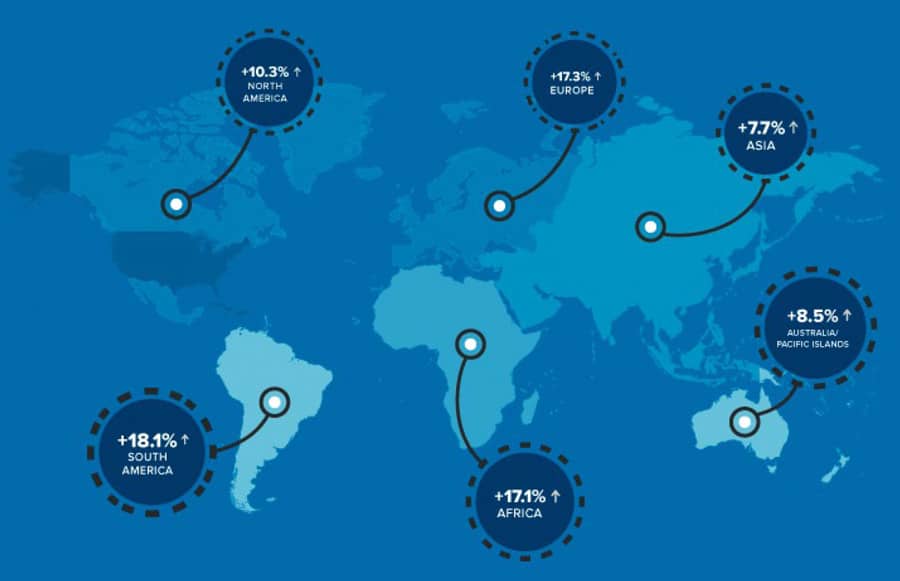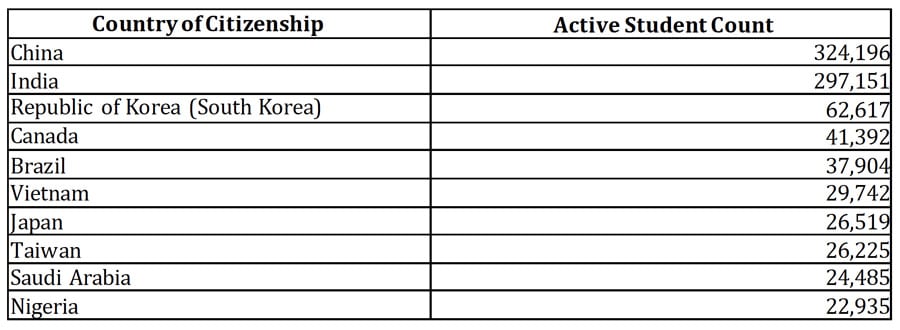Full-year US visa numbers show solid gains for 2022
- The latest student visa data from the US highlights a just-over 10% increase in F-1 and M-1 visas for 2022
- China remains the largest sending market, but only slightly, and Indian numbers continue to expand quickly
- The number of foreign graduates participating in Optional Practical Training (OPT) grew only marginally in 2022 but is expected to continue to recover this year and next
For the calendar year 2022, there were a total of 1,362,157 international students with active F-1 or M-1 visas for study in the United States. This represents a 10.1% increase over 2021.
Those are the headline findings for the SEVIS by the Numbers Report for 2022, the latest in a series of such reports from US Immigration and Customs Enforcement (ICE).
As always, you have to take the good with the bad when it comes to the SEVIS numbers. What makes SEVIS so important is that it draws on a national data system (SEVIS stands for "Student and Exchange Visitor Information System"), and so it provides a comprehensive overview of international enrolment across nearly all institutions and programme types. The challenge in interpreting this data, however, lies in the fact that SEVIS counts enrolments, as opposed to students. In other words, the same student could be counted more than once if they enrolled in more than one programme during the year. For example, the same student that joins an ELT course in January and then begins an undergraduate degree in September would be counted twice within SEVIS.
This is why the absolute numbers reported out of SEVIS are always higher than other major indicators for the US, such as IIE's annual Open Doors census of foreign students. There tends to be, however, a close alignment between the two and so an increase in reported enrolments via SEVIS will typically reflect in similar growth in the IIE census.
With those cautions firmly in place, the latest SEVIS report tells us that most foreign students in the US (about 90%, or roughly ) are there for higher education, with roughly equal percentages pursuing bachelor's (37%) or master's (41%) degrees. Associate degrees accounted for 6% of the total with another 16% in doctoral programmes.
Of the reported total for 2022, more than 117,000 were in pre- or post-completion optional practical training (OPT). This is up marginally over OPT enrolments for 2021, and remains well below pre-COVID levels. We might expect, however, that those numbers will continue to recover this year and next, especially in light of the announcement last year that more science and technology students will now be eligible for an expanded "STEM OPT" work term of up to three years.
Meanwhile, just over 53,500 are enrolled in K-12 programmes with most of those younger students coming from China (25%), South Korea (8%), Mexico (8%), Spain (6%), and Vietnam (6%). This is down from the roughly 78,000 students in US K-12 as of 2019.
SEVIS is reporting growth from all sending regions in 2022, with South America, Africa, and Europe showing the greatest year-over-year gains in percentage terms.

China and India remain by far the largest student markets for US education, and together accounted for roughly half of all SEVIS records last year. However, they continued to reflect contrasting trends with Chinese numbers softening again: "China sent fewer students in 2022 in comparison to 2021 (-24,796), while India sent more students (+64,300)."

For additional background, please see:















